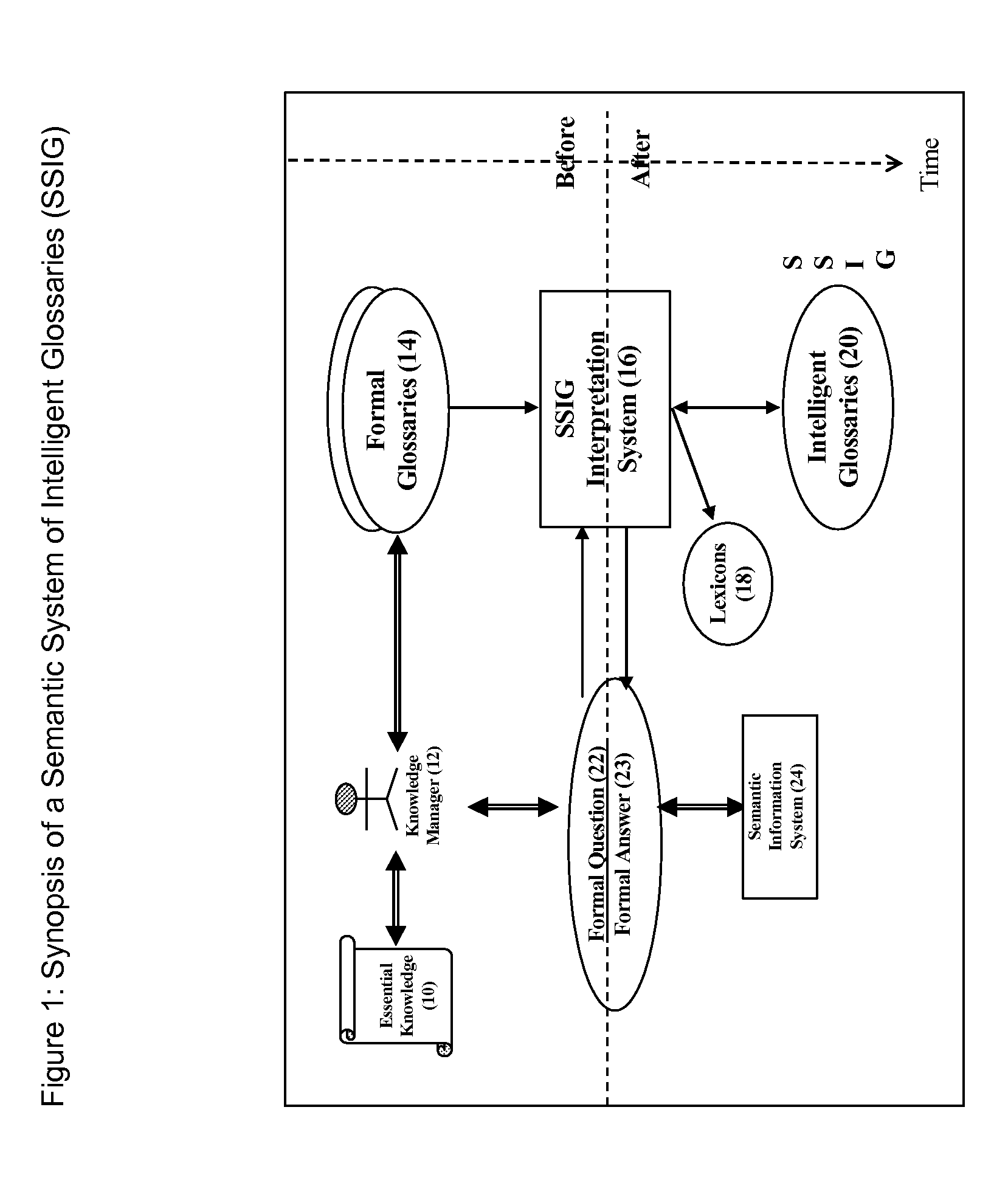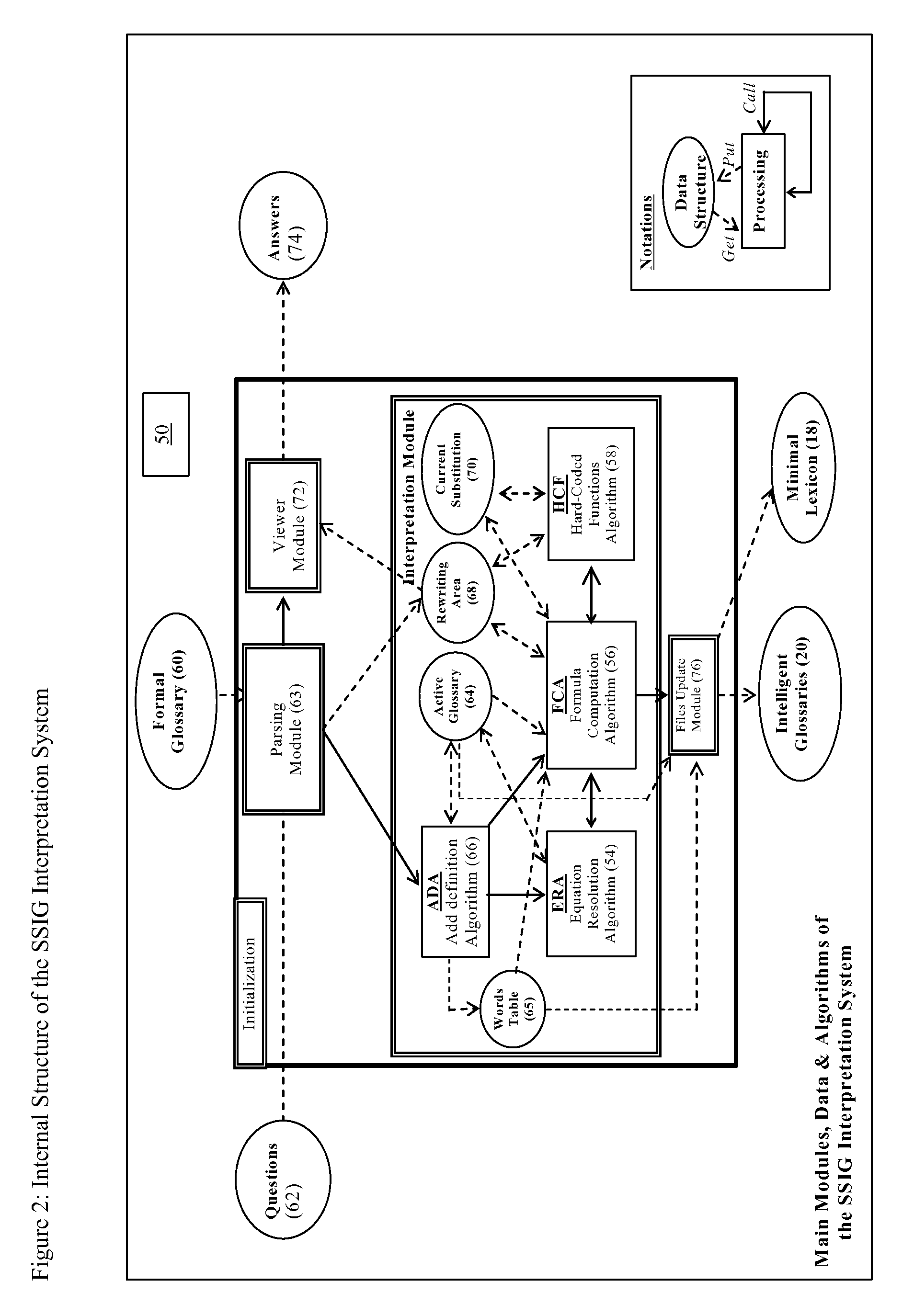Methods and systems for interpreting text using intelligent glossaries
a technology of intelligent glossaries and text, applied in the field of methods and systems for interpreting text using intelligent glossaries, can solve the problems of limited description logic, no formal language for solving interpretation problems between two different ontology knowledge bases, and inaccessibility to the general publi
- Summary
- Abstract
- Description
- Claims
- Application Information
AI Technical Summary
Benefits of technology
Problems solved by technology
Method used
Image
Examples
case 1
[0374]FCA is used for applying glossaries to a formula, with different modes (either all undefined indications are changed to @ or all undefined indications remains “as is”); there are two possible cases to which this is applied:[0375] For a formula that is an expression, corresponding to a declarative sentence (a statement);[0376]Case 2. For a formula that is a term, corresponding to a naming sentence (for naming an object or a state).
[0377]In Case 1, the response of a glossary to a expression is the primary value obtained by applying the tree of all applicable definitions from glossaries of SSIG, to the sub-expressions of the expression; depending on the mode, FCA keeps the unresolved indications as is, instead of valuating them by @; this leads to a primary expression, containing only indications and primary symbols; otherwise the process stops when nothing but primary symbols remain: this is an arrangement. After being reduced by LoF, this arrangement becomes a primary value whi...
PUM
 Login to View More
Login to View More Abstract
Description
Claims
Application Information
 Login to View More
Login to View More - R&D
- Intellectual Property
- Life Sciences
- Materials
- Tech Scout
- Unparalleled Data Quality
- Higher Quality Content
- 60% Fewer Hallucinations
Browse by: Latest US Patents, China's latest patents, Technical Efficacy Thesaurus, Application Domain, Technology Topic, Popular Technical Reports.
© 2025 PatSnap. All rights reserved.Legal|Privacy policy|Modern Slavery Act Transparency Statement|Sitemap|About US| Contact US: help@patsnap.com



